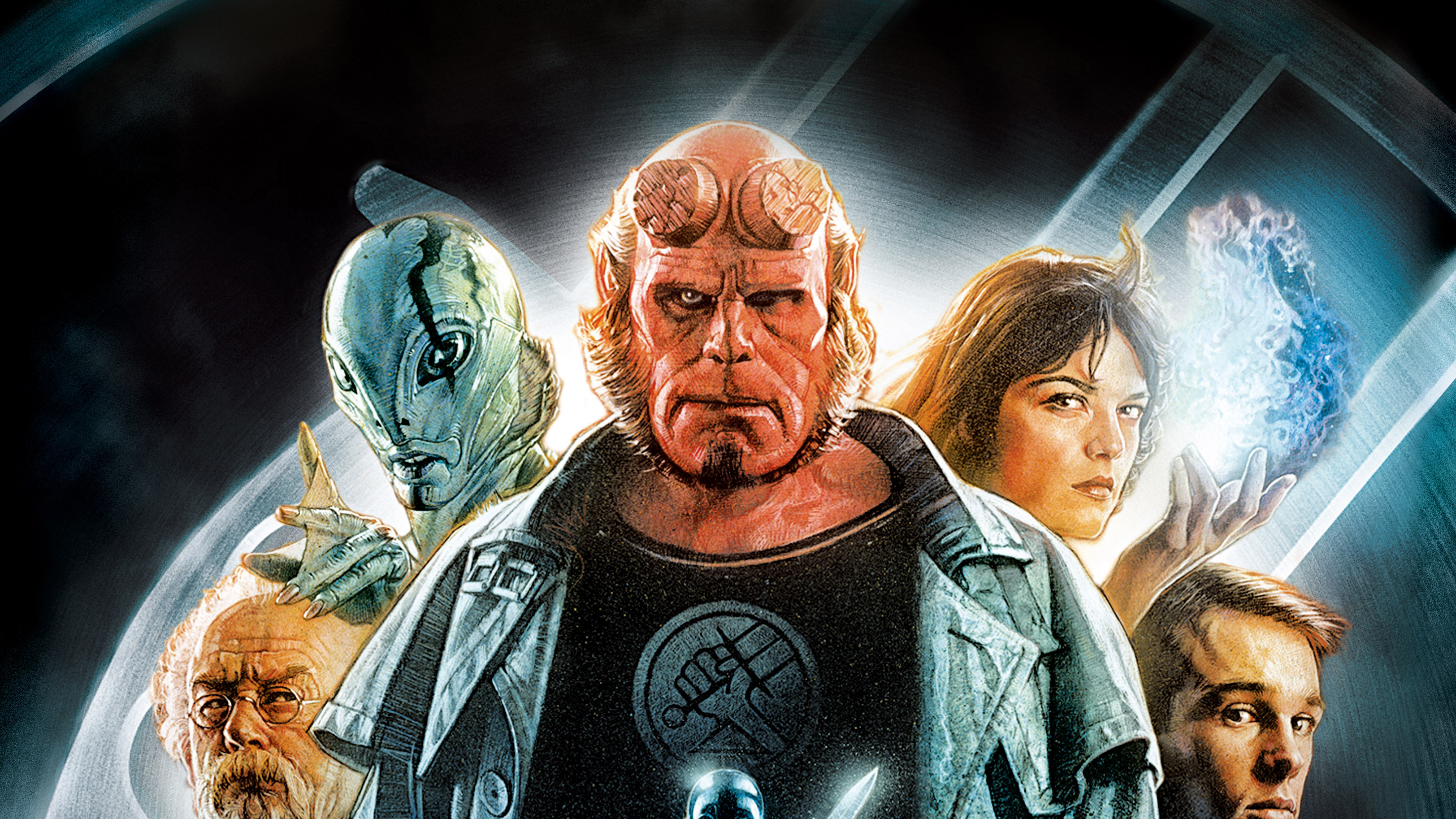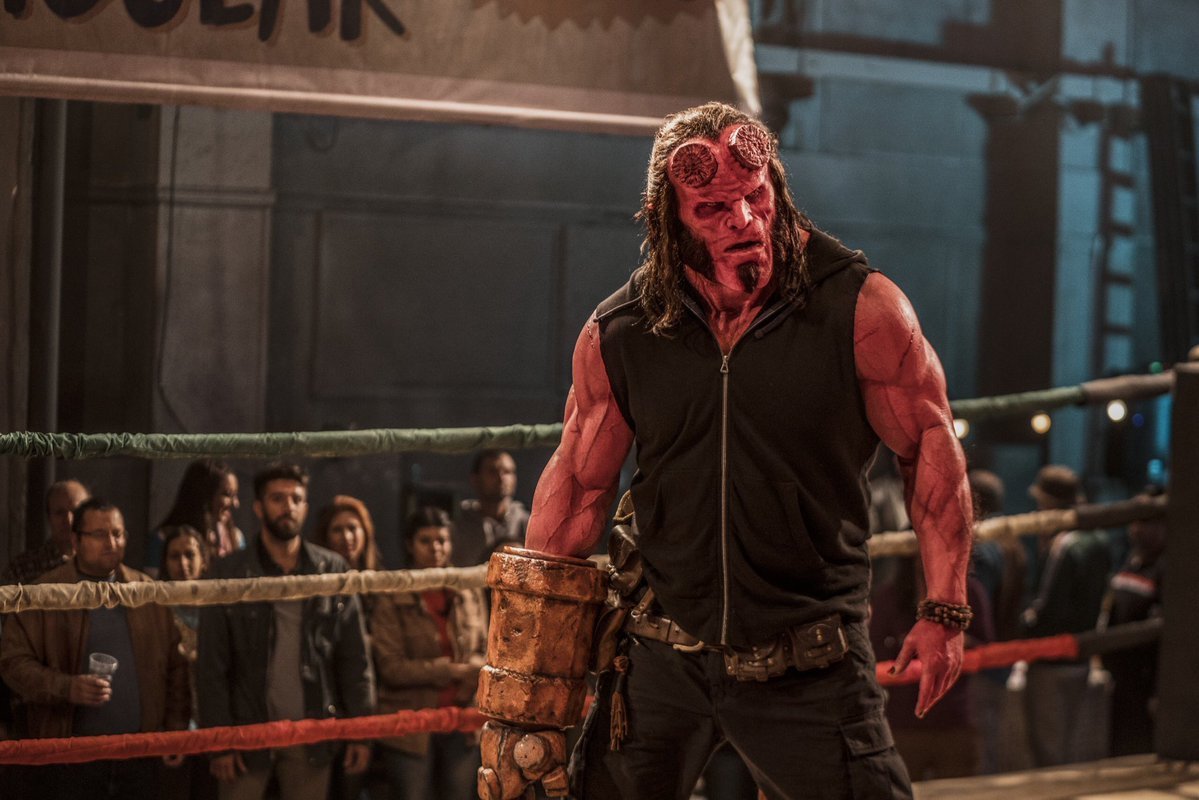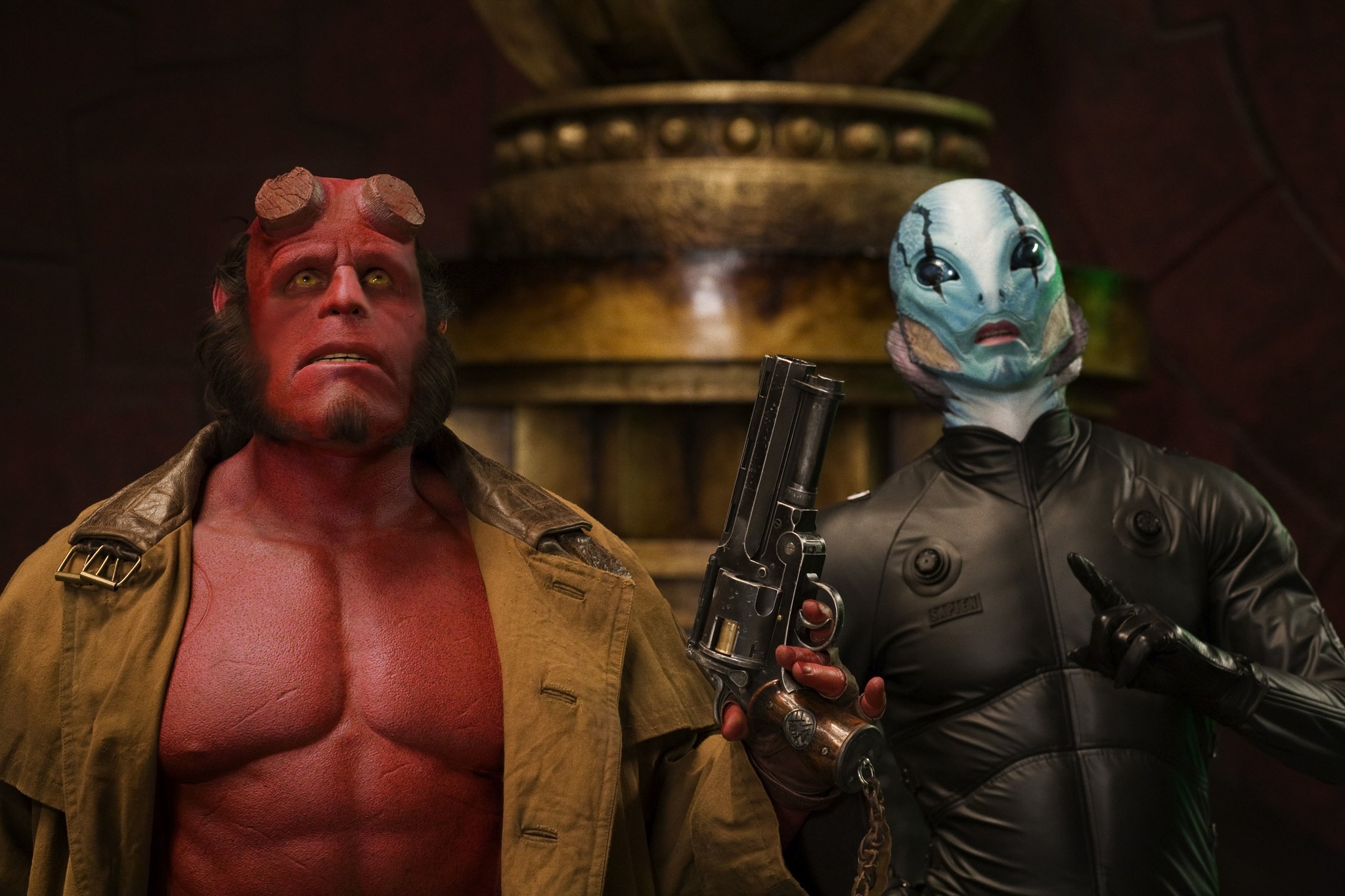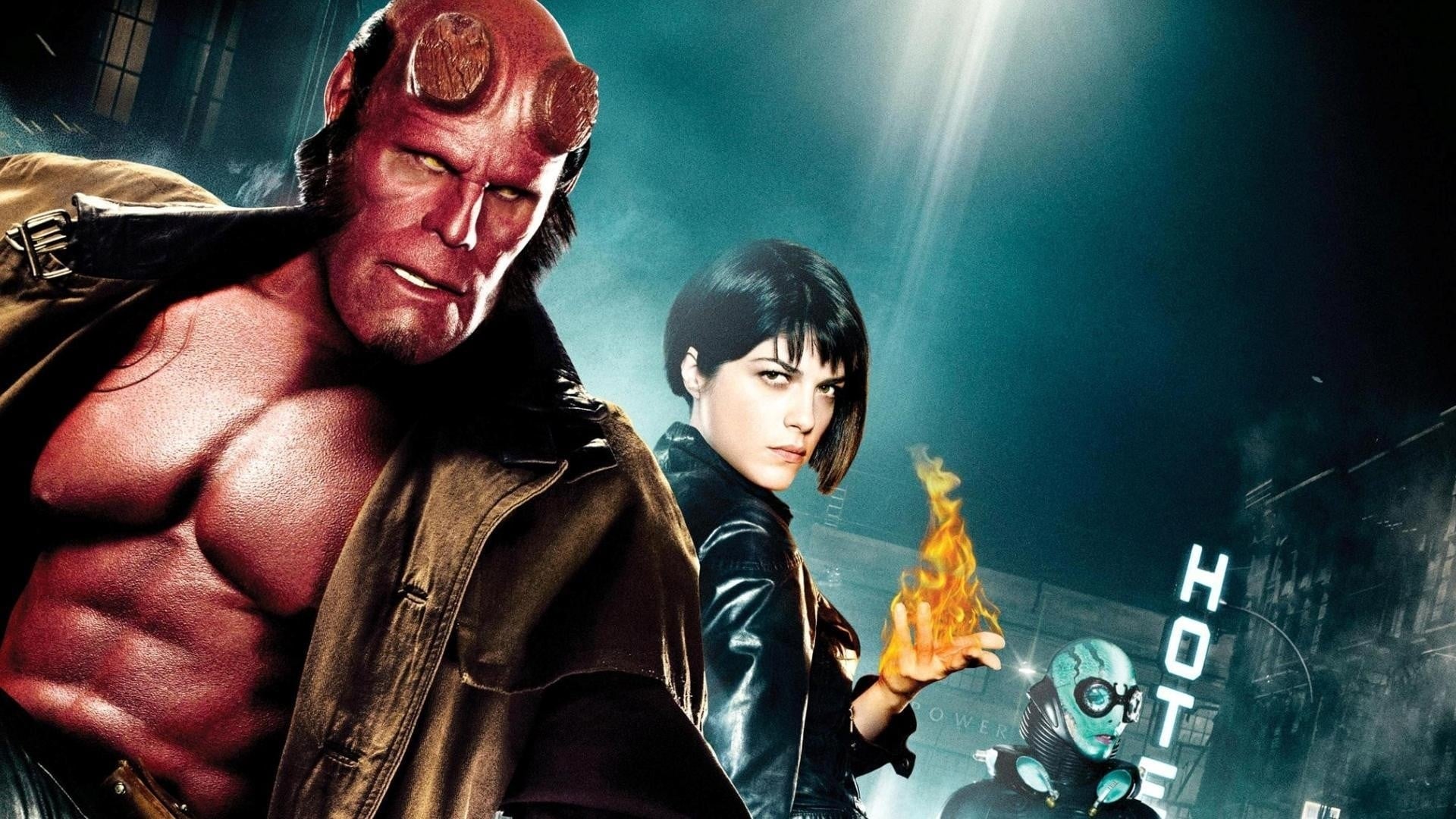The 5 Never Before Seen Hellboy Sketches by Mike Mignola offer a rare glimpse into the creative mind of one of modern comics’ most influential artists. Mike Mignola’s vision has shaped not only the character of Hellboy but also an entire universe that melds horror, folklore, and mythology into a vivid tapestry of storytelling. With each stroke of his pencil, Mignola has crafted a narrative that resonates with readers, blending the grotesque with the heroic, often within the same frame. The sketches serve as a testament to his artistic evolution and provide insights into his creative process, showing how Hellboy emerged from mere concepts into an iconic figure adored by fans around the world.
The Evolution of Hellboy’s Design
Mignola’s sketches illustrate the metamorphosis of Hellboy’s visual identity. Each draft provides insight into how Mignola navigated the complexities of character design, balancing elements of horror with personality and depth.
>>> Buy now: Hellboy 4 Duvet Cover Pillowcase Bedding Sets Home Bedroom Decor
Early Conceptualization: A Primal Force of Nature
In the first sketch, we witness an early version of Hellboy characterized by an exaggerated physique and raw power. This primal rendition serves as a stark contrast to the refined version we know today, showcasing how Mignola initially embraced a more monstrous representation.
This initial portrayal emphasizes Hellboy’s demon heritage, portraying him as a being of immense strength and potential menace. The bulging muscles and grotesque features speak volumes about Mignola’s intent to convey raw energy and the notion of destruction lurking beneath the surface.
Mignola’s loose, expressive lines evoke movement and chaos, hinting at the character’s turbulent existence. In this early rendering, it’s evident that Mignola was wrestling with the idea of Hellboy as not just a hero but a creature forged from darkness with the power to wreak havoc. This tension would later be refined and transformed into the complex character we see today, reinforcing Mignola’s mastery of evolving concepts into something deeply engaging.
The Artistic Journey: Refinement and Complexity
As Mignola shifted away from the primal depiction, he honed in on the subtleties that would define Hellboy’s character. The shift towards a more controlled style demonstrates Mignola’s understanding that true depth lies not just in physicality but in emotional resonance.
Through this process, Mignola learned to embody Hellboy’s struggles with identity and morality through visual cues. While maintaining the essence of raw power, he introduced a balance of humanity and vulnerability. This exploration into the psyche of Hellboy allowed readers to connect with him on a personal level, creating a layered character that resonated deeply within the comic book community.
The transformation is symbolic of Mignola’s dedication to storytelling; it reflects a keen awareness of how character design can amplify narrative themes. By taking Hellboy from a brute force to a nuanced protagonist, Mignola exemplifies the transformative power of art in storytelling.
The Birth of the Bureau for Paranormal Research and Defense (BPRD)
The second sketch shifts focus from character to environment, encapsulating the essence of the BPRD—a cornerstone in the Hellboy universe. Here, Mignola crafts an atmosphere rich in gothic undertones, establishing a setting that echoes the supernatural narratives unfolding within the comics.
Building an Atmosphere of Mystery and Intrigue
The dimly lit room filled with shadowy figures and strange artifacts unveils the secretive nature of the BPRD. Mignola’s ability to evoke a sense of foreboding through minimalist lines and shadows creates an ambiance that draws readers into the world of paranormal investigations.
This particular sketch functions as a precursor to the elaborate environments that would come to define the Hellboy series, illustrating how Mignola seamlessly blends historical contexts with fantastical elements. The artifacts scattered throughout the space hint at ancient mysteries yet to be uncovered, reinforcing the BPRD’s role as guardians against dark forces.
Further analysis reveals Mignola’s prowess in using negative space to create tension. By allowing shadows to dominate the illustration, he invites the reader to ponder what lurks beyond the visible, contributing to the air of dread that permeates the stories. This technique becomes a hallmark of Mignola’s work, enhancing the eerie charm of Hellboy’s world.
The Influence of Historical Contexts
Mignola’s work often incorporates real-world myths, legends, and historical events. The BPRD’s inception in a gothic setting pays homage to the horror genre’s roots while forging its own path within the medium. This juxtaposition of the familiar and the extraordinary speaks to Mignola’s intention to ground his fantastical narratives with authentic cultural touchpoints.
The sketch serves as a reminder of how settings can become characters in their own right. The BPRD embodies the struggle between good and evil, a constant battleground against the forces of darkness. Mignola’s commitment to constructing not just a backdrop but an integral part of the narrative illustrates the depth of his artistry.
As readers delve deeper into this world, they discover layers of complexity within the BPRD itself—an organization rife with internal conflicts, moral dilemmas, and the weight of responsibility. Mignola’s sketches lay the groundwork for these themes, demonstrating how even a seemingly simple environment can hold significant narrative power.
Abe Sapien: A Complex Character Emerges
The third sketch presents an early vision of Abe Sapien, one of Hellboy’s most beloved allies. This iteration highlights Abe’s aquatic origins while delving into the underlying themes of alienation and acceptance.
Initial Designs and Their Implications
Abe’s early conceptualization leans heavily into his fish-like traits, emphasizing an overtly grotesque appearance. The pronounced gills and serpentine form showcase Mignola’s willingness to explore the boundaries of monstrosity in his character designs.
However, this sketch also foreshadows Abe’s journey toward becoming a gentle soul, emphasizing the complexity of his character arc. Mignola’s experimentation with various designs signifies a larger commentary on identity—Abe embodies the struggle of finding place and belonging within a world that often perceives him as ‘other.’
What stands out in this creative process is Mignola’s ability to infuse empathy into his character designs. As Abe transforms from a purely monstrous entity into a figure embodying wisdom and sensitivity, the audience learns to appreciate the beauty hidden beneath the surface. The contrast between initial grotesqueness and eventual elegance serves as a powerful metaphor for acceptance and understanding across differences.
The Balancing Act: Horror and Pathos
Mignola expertly balances horror with pathos in Abe Sapien’s design evolution. While the early sketches lean towards a monster-like appearance, the gradual convergence to a more humanized form allows readers to connect with his struggles on a profound level.
The shift from grotesque to refined demonstrates Mignola’s commitment to crafting multi-dimensional characters who resonate emotionally. It invites reflection on broader societal themes, such as loneliness and the search for acceptance in a world that often judges based solely on appearances.
Abe Sapien’s journey serves as a vital counterpoint to Hellboy’s narrative, highlighting the shared experiences of beings caught between worlds. This exploration ultimately deepens the reader’s connection to both characters, enriching the overall tapestry of the Hellboy mythos.
Rasputin: A Mastermind Revealed
Rasputin, a central antagonist in the Hellboy series, emerges vividly in the fourth sketch. Mignola captures the essence of this enigmatic character, revealing the calculated darkness that defines his motivations.
Capturing Emotion Through Artistic Technique
Mignola’s depiction of Rasputin is strikingly emotive, utilizing subtle lines to convey a brooding intensity. The sly grin and penetrating gaze evoke a sense of unease, inviting readers to ponder the machinations underpinning his actions.
This sketch encapsulates Mignola’s ability to craft villains with depth and complexity. Rasputin is not merely a force of evil; he represents the darker aspects of ambition and manipulation. Mignola’s artistic choices allow us to glimpse into Rasputin’s psyche, laying the foundation for a character who embodies the perpetual conflict between light and dark.
The nuance in Rasputin’s expression showcases Mignola’s talent for visual storytelling. Rather than presenting a one-dimensional villain, he invests Rasputin with charisma and intellect, transforming him into a compelling adversary. This layered portrayal serves to heighten the stakes in Hellboy’s narrative, enriching the thematic exploration of choice, fate, and the consequences of power.
The Role of Antagonism in the Narrative
Rasputin’s character reveals the importance of well-crafted antagonists within storytelling. Mignola’s sketches suggest a philosophy grounded in the belief that true conflict arises not simply from external forces but from complex relationships between characters.
As Rasputin engages with Hellboy, their interactions illuminate the duality of heroism and villainy. The resulting tension propels the narrative forward, encouraging readers to grapple with moral ambiguities inherent in the battle between good and evil.
Moreover, Rasputin’s presence reinforces the overarching themes of destiny and free will, challenging Hellboy’s agency as he navigates the entangled web woven by his foes. Mignola’s skillful portrayal of Rasputin ultimately underscores the intricacies of storytelling, emphasizing the necessity of dynamic characters to elevate the narrative experience.
Crafting Unique Environments: The Final Sketch
The final sketch transports us to a haunting landscape, laying the groundwork for the mythical realms inhabited by Hellboy. Mignola’s affinity for designing evocative environments comes to the forefront, demonstrating how settings inform character journeys.
Enigmatic Landscapes: A Reflection of Themes
This cryptic landscape is riddled with unsettling shapes and enigmatic structures, evoking an aura of mystery. Mignola’s distinct aesthetic shines through as he conjures a world teeming with remnants of forgotten civilizations, suggesting an inexhaustible wealth of stories waiting to be uncovered.
The desolate nature of the environment echoes the themes of isolation and existential exploration prevalent within the Hellboy series. Each shape and structure tells a story of its own, transforming the landscape into a living entity that complements the characters’ journeys.
Mignola’s fascination with the unknown fuels this creative endeavor, inviting readers to immerse themselves in a world where the past intertwines with the present. The interplay between the characters and their surroundings becomes central to the narrative, underscoring the significance of environment in shaping identity and destiny.
The Impact of Visual World Building
Mignola’s landscapes are not merely backdrops; they become integral components of the narrative, enhancing character development and thematic exploration. Through careful design, he crafts immersive worlds that beckon readers to delve deeper into the mysteries they harbor.
The sketch hints at further adventures awaiting Hellboy and his companions, foreshadowing encounters with fantastical creatures and ancient relics. Mignola’s commitment to world-building amplifies the allure of the Hellboy universe, transforming it into a rich tapestry of interconnected tales.
By exploring the intricate relationship between character and environment, Mignola demonstrates the power of visual storytelling. He reminds us that every detail contributes to the overarching narrative, effectively blurring the lines between character, setting, and theme.
The 5 Never Before Seen Hellboy Sketches by Mike Mignola offer invaluable insights into the creative process behind one of modern comics’ most iconic figures. Through these sketches, we witness the evolution of Hellboy—from a primal force to a multilayered character grappling with his identity, purpose, and place in the world.
Mike Mignola’s artistic journey is marked by a commitment to developing characters, settings, and narratives that resonate deeply with readers. His ability to fuse classic comic book aesthetics with elements of gothic horror creates a unique visual language that captivates and enchants.
These sketches invite us to appreciate the meticulous craftsmanship that goes into storytelling, reminding us that every line drawn holds the potential for greatness. They illuminate the path taken by Mignola as he sculpted a world that continues to inspire and challenge notions of heroism, identity, and the thin veil separating light from darkness. Through the lens of his artistry, we find not just a character—but a legacy that transcends the pages of comic books and lingers in the hearts and minds of fans worldwide.






Related post
5 Tips to Style Hoodies on Cold Winter Days
As winter settles in, many of us find ourselves reaching for cozy essentials that provide warmth and comfort. One such wardrobe staple is the hoodie.
The Truth Behind the Rumor ‘Santa Claus Is Ugly’ That Surprises Many
As the holiday season approaches, the character of Santa Claus emerges in various forms, his iconic red suit and white beard eliciting warmth and joy
Guide to Creating a Heavy Metal Sound in the Style of Tony Iommi
Heavy metal is a genre rich with history and technical prowess, and few guitarists have influenced its sound as profoundly as Tony Iommi, the legendary
Breaking Down the Key Tactical Edgeas in the Oakland Raiders Lineup
Breaking Down the Key Tactical Edges in the Oakland Raiders’ Lineup reveals not just a football team but a storied franchise with an indomitable spirit.
The Most Heartwarming Moments of Spider Man On Screen
The world of Spider-Man is not just filled with thrilling battles and breathtaking stunts; it’s a tapestry woven with moments of profound empathy, love, and